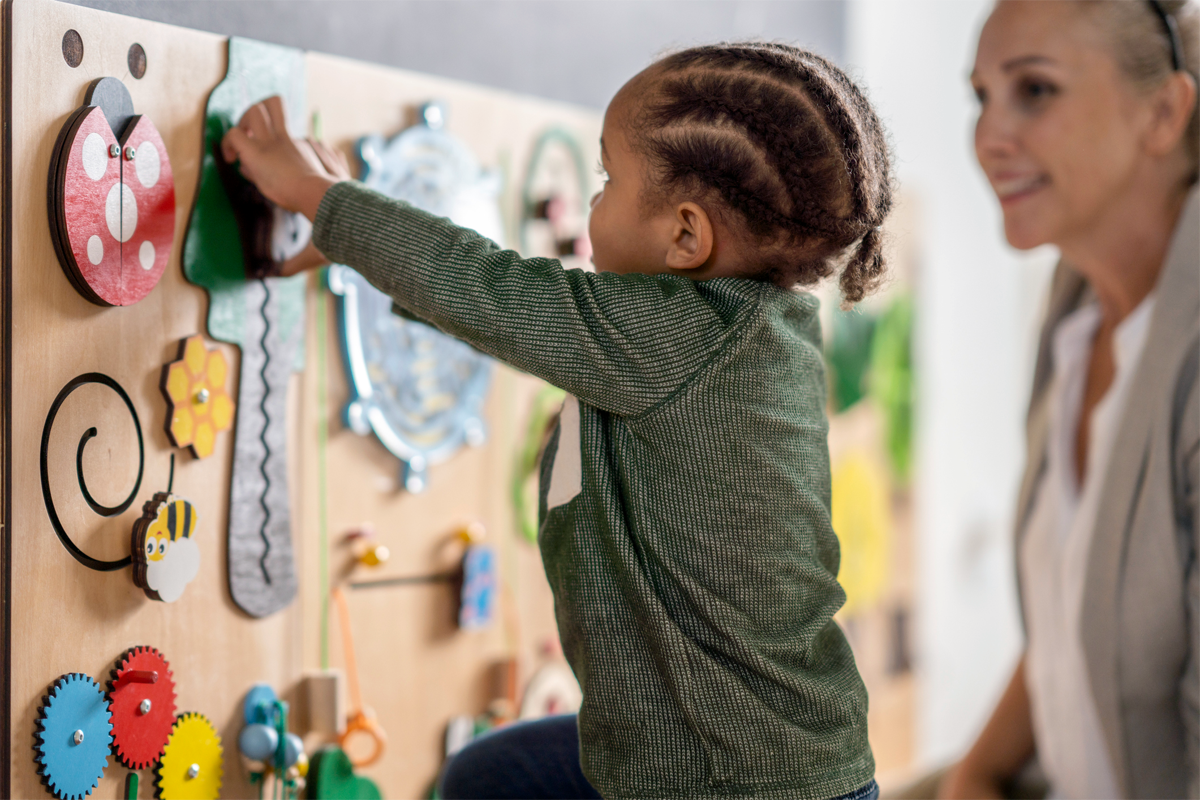Differences in how autistic people react to their sensory environment have been hallmarks of the condition since its earliest descriptions. Although sensory reactivity differences are common in many other psychiatric and neurodevelopmental conditions, autism is unique in that these differences are now part of its core diagnostic criteria.
The Diagnostic and Statistical Manual of Mental Disorders, Fifth Edition lists three different sensory response patterns as diagnostic features of autism. In the case of hyperreactivity (HYPER), a person has a disproportionate reaction to sounds, smells, textures and other sensations. A person with hyporeactivity (HYPO) responds little or not at all to the sensory stimuli they encounter in everyday settings, such as someone calling their name or the sensation of pain. By contrast, someone with sensory-seeking (SEEK) traits craves or repeatedly seeks out certain kinds of sensory input.
One or more of these patterns can be present within the same person across different sensory modalities, such as vision, touch, taste or the vestibular sense, which enables balance. To measure these sensory response patterns in an autistic person, researchers and clinicians may use a caregiver or self-report questionnaire to gather information about all sensory modalities at once. For example, questions to assess hyperreactivity would ask about visual, auditory, tactile and other hyperreactive sensory tendencies and then combine the results into one “overall HYPER” score.
But this method risks losing a lot of information. For instance, someone who has severe and impairing sensory hyperreactivity limited to one sense might have the same overall HYPER score as someone with only a slight amount of hyperreactivity across a range of senses.
If the amount of HYPER, HYPO or SEEK in one sensory modality isn’t strongly predictive of that same response pattern in all other modalities, the “overall” score could be misleading and not fit for purpose.
So what exactly should a researcher or clinician do if they want to measure sensory reactivity in autistic children or adolescents? We argue that the most appropriate approach — based on the largest and most comprehensive study of sensory questionnaire scores ever conducted in autistic children — may be to examine response patterns of interest in each modality separately (for instance, visual HYPO or auditory SEEK) rather than relying on overall scores.
T
o explore this approach, we undertook an ambitious integrative data analysis project within the Autism Sensory Research Consortium, a group of autism researchers based in the United States and the United Kingdom, funded by the Nancy Lurie Marks Family Foundation. Pooling data from 10 independent research groups, as well as the U.S. National Database for Autism Research, we constructed a dataset of nearly 4,000 autistic children and adolescents spanning a broad range of ages and ability levels.Importantly, we had data for all of these participants from one or more of the most commonly used caregiver-reported measures of sensory reactivity (the Sensory Profile or Sensory Experiences Questionnaire). We then applied cutting-edge statistical models to test whether sensory-modality-specific HYPER, HYPO and SEEK items correlated strongly enough to produce valid “overall” scores for each pattern — or whether these response patterns were better assessed as separate modalities.
Our results were nuanced. The findings generally supported the validity and interpretability of “overall HYPER” scores, but not the validity of the “overall HYPO” construct. And the “overall SEEK” score was valid only when it was constructed using a subset of the sensory modalities, specifically the visual, tactile, oral-tactile and “movement” dimensions (the last of which involves vestibular and proprioceptive sensations).
We also found that single-modality measures of HYPER, HYPO and SEEK provided substantial added value in explaining individual differences over and above their respective “overall” scores for all sensory response patterns. Many common caregiver-reported measures of sensory reactivity in autistic children — particularly those indexing “overall HYPO” or “overall SEEK” — may therefore have psychometric problems that make their scores less than optimal.
Notably, even though HYPER had enough evidence to support the continued use of overall scores, single-modality measures of HYPER also appeared to provide added value over and above the scores that combined items across multiple sensory modalities. In other words, these more granular scores for constructs such as visual HYPER or tactile HYPER also seem useful when explaining individual differences in sensory reactivity
O
ur findings offer support for the use of either overall or modality-specific HYPER scores if preferred for the particular research question at hand. For instance, when performing a study focused specifically on auditory sensory differences, researchers might want to administer an auditory HYPER measure such as the Auditory Behavior Questionnaire (Aversive Reactions subscale) or the Pediatric Hyperacusis Questionnaire rather than a simply collecting a general measure of HYPER.That said, there are not yet robust single-modality measures for all relevant sensory constructs. This work, therefore, further highlights the need for novel measure development and validation, which is foundational to rigorous science.
Our work is not without limitations. Notably, all of these conclusions apply only to caregiver-reported sensory questionnaires. We are working to understand whether the same supra-modal sensory constructs are valid when using self-report questionnaires, observational measures of sensory reactivity, or structured interviews.
We also had limited data related to certain sensory response pattern and modality combinations (such as gustatory HYPO) and few “multisensory” items. It is possible that the overall HYPO and SEEK scores would have been deemed valid if more psychometrically robust modality-specific item sets were included in their calculation.
Replicating and extending this work with different measures, different item pools and different age groups would advance us toward more generalizable conclusions about the measurement of sensory phenotypes in autistic people across the lifespan.





